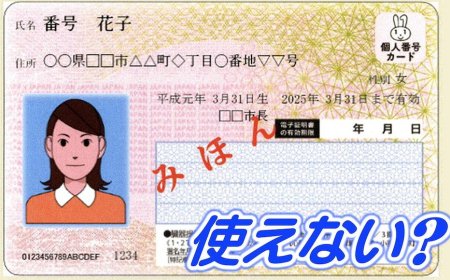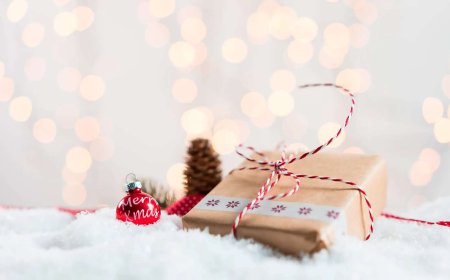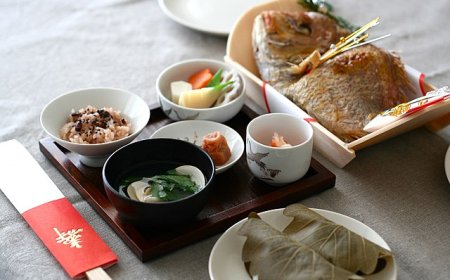Gion Festival in Kyoto - Japan's biggest festival
Matsuri – When it comes to festivals in Japan, we can't help but mention the three great float festivals including the Gion festival in Kyoto Prefecture, the Takayama festival in Gifu Prefecture and the Chichibu festival in Saitama.

All three of these festivals are festivals with a magnificent procession with hundreds of thousands of visitors. In particular, the Gion festival in Kyoto takes place over the course of a month, so the number of participants is usually the largest among the three great festivals.
Today, we will learn about the Gion festival in Kyoto to see what highlights this festival has that makes it on the list of the three great float festivals in Japan.
The Origin of the Gion Festival in Kyoto
The Gion Festival in Kyoto was born from praying to the gods for protection from natural disasters and epidemics. In fact, in the year 869, a terrifying epidemic spread across Japan, claiming the lives of countless people.
Faced with the people's request, Emperor Seiwa decided to pray to the gods to put an end to the epidemic. The emperor made 66 extremely sophisticated and luxurious chariots representing the 66 provinces at that time and went to the Yasaka shrine in Kyoto to send prayers to the gods.
After Emperor Seiwa made an invocation to the gods, the epidemic was gradually pushed back. Since then, people in Kyoto regularly hold a palanquin festival from Yasaka Shrine to wish Japan to avoid natural disasters.
After 869, the Gion festival was also held, but not every year. By 970, the Gion festival had become an annual festival in Kyoto. During the period from 970 to the present, the Gion festival was only suspended for 33 years from 1477 to 1500 because of civil war.
After that time, every year the Gion festival is held and the scale is getting bigger and bigger. With the meaning and value of the long tradition of the Gion festival, UNESCO has recognized the Gion festival as an intangible cultural heritage of the world.
Gion Matsuri . Festival Time
Gion Matsuri is held for a month from July 1 to July 31 every year. During this period, many events take place, but especially three milestones cannot be ignored: Yoiyama day (July 14 - July 16), Sakimatsuri day (July 17) and Atomatsuri day (July 24). ). You can refer to the following milestones during the festival:
From July 1 to 5 : Kippuiri, the festival's opening ceremony, is performed in each neighborhood.
July 2nd: Kujitorishiki, the selection of the parade order, is carried out in the council hall of the municipality.
07/07 : Ayagasaboko's visit to the shrine of chigo children (children on duty to help monks in performing rituals and singing).
July 10 : Lantern parade to welcome the portable shrine mikoshi .
July 10: Mikoshi Arai, the purification of mikoshi with holy water from the Kamo River.
From July 10-13 : Assembling the procession .
On the morning of July 13: A visit to the shrine of the chigo children of Naginataboko.
Afternoon of July 13:: Shrine visitation by the chigo children of Kuse Shrine.
July 14: Yoiyoiyoiyam – one of the 3 days before the Yamaboko rước procession
July 15 : Yoiyoiyama – one of the 3 days before the Yamaboko rước procession
July 16: Yoiyama – one of the 3 days before the Yamaboko . procession
July 16 : Yoiyama shinshin hono shinji , art performances
July 17 : Parade of Yamaboko floats.
July 24 : Mikoshi parade from Yasaka Shrine to the city .
July 24 : Parade of hanagasa or flower umbrellas.
July 24: Mikoshi parade from the city to Yasaka Shrine .
July 28: Mikoshi Aria, cleanses Mikoshi with holy water from the Kamo River.
July 31: End of the festival at Eki Shrine.
Highlights of Gion Festival in Kyoto
The duration of the festival is for a month
Many festivals in Japan have a grand scale but usually only last 2 to 3 days. For example, the Chichibu festival only takes place in 2 days, the Takayama festival takes place twice a year, but only takes place for 2 days each time. Meanwhile, the Gion festival in Kyoto takes place during a month from July 1 to July 31, giving many tourists the opportunity to participate in this festival without having to calculate too much time. .
33 Unique and splendid floats
According to legend, Emperor Seiwa prayed to the gods to make 66 palanquins representing 66 provinces at that time. However, at present, only 33 palanquins are carried during the Gion festival. 33 The procession during the Gion festival in Kyoto is divided into two types: Hoko and Yama. Hoko is a large two-story palanquin with large wheels used for pulling. This type of palanquin weighs up to 12 tons and usually requires about 50 people to pull the cart.
Sitting on the palanquin, there are also 35-40 people playing musical instruments to increase the spirit, 2 people standing in front shouting slogans and 4 people standing on the roof to help the palanquin always move on the right route. The Yama is a smaller palanquin with a weight of less than 1 ton that can be carried by more than 14-24 people on their shoulders. All 33 floats are extremely lavish and splendid, showing the top level of craftsmanship of contemporary craftsmen.
Hoko-style procession in Gion
Among the floats, there is a rather special type of float, which is the Yamaboko. This is the largest type of palanquin with a height of up to 25 meters and a weight of up to 12 tons. At the heart of the festival is the 17th and 24th of July, which is also the day the Yamaboko float is carried around the streets.
Because the height of the palanquin was too great, Kyoto Prefecture had to find it very difficult to "clear the way" for the palanquin to pass. Some places even redesigned public buildings to be able to collapse just to accommodate Yamaboko passing through at the annual festival.
33 This float after the festival will be dismantled, not left intact, and next year during the festival season they are reassembled into complete floats.
Musicians perform during the procession
Because it is held for a month, the Gion festival has a lot of rich activities with elaborate and monumental investments that make the tourists coming here never feel bored but always have a new feeling. everyday.
Some typical activities that can be mentioned in the month of Gion festival are the Yamaboko Yunko parade, Omukae-Chochin – the procession ceremony held to welcome the Mikoshi, the Mikoshi-Arai purification ceremony, the setting up ceremony. Hoko and Yama float, Gion Bayashi float trial, Yoiyoiyoiyama (July 14), Yoiyoiyama (July 15), Yoiyama (July 16), Kyogen play performance, rope cutting ceremony, Iwami Kagura exorcism dance, exhibition Exhibition of heirloom treasures of local people…
Enjoy a variety of unique dishes during the Gion festival
During the festival, in addition to admiring the rich activities in the festival and following the procession, enjoying the festival food is also one of the very attractive things. During the month of Gion festival, Kyoto's commercial area will become a pedestrian area selling food.
Coming to the central business district at this time, you can find most of the most typical and delicious Japanese dishes such as Yakitori grilled chicken skewers, Taiyaki grilled fish cakes, Takoyaki octopus balls, Okonomiyaki pancakes and so on. Many other dishes can be found here.
Gion Matsuri Festival is one of the three largest float festivals in Japan (three great festivals). The unique feature of the Gion festival is that it takes place during a summer month, so you can easily arrange a trip to Kyoto during the festival season. If you have come here, do not miss the Yamaboko procession days because this is the heart of the festival.
--------------------------
Injavi.com - Visit in Japan
Related Products






































































































